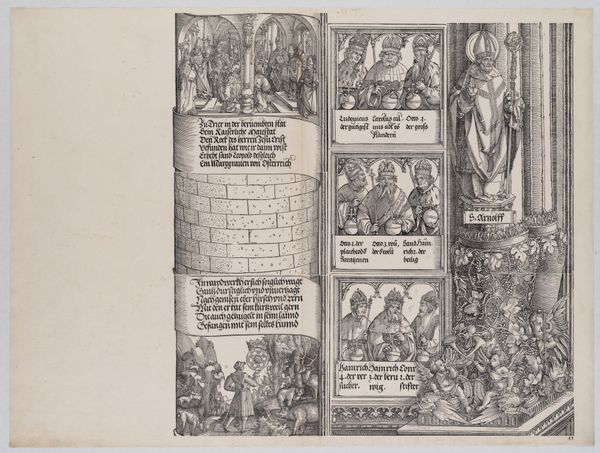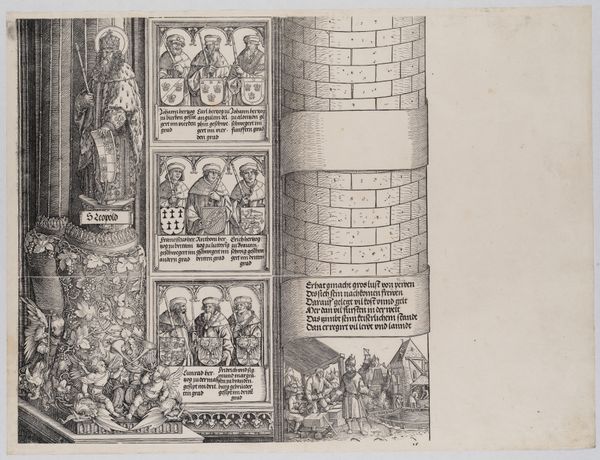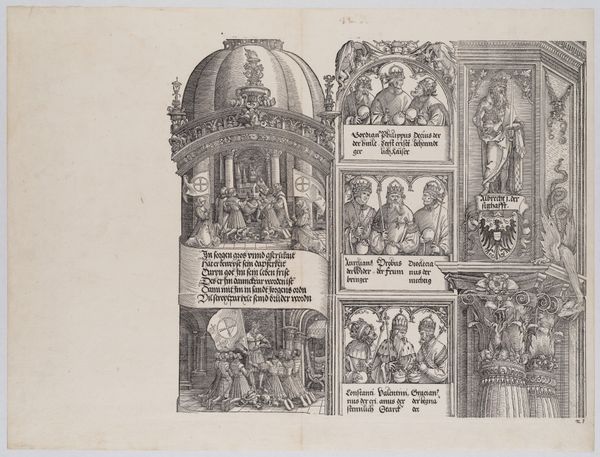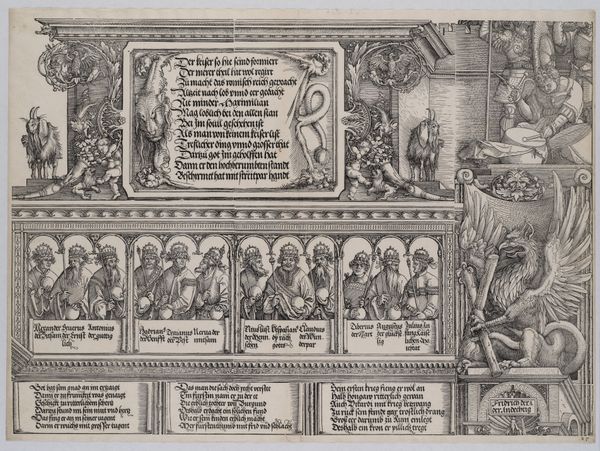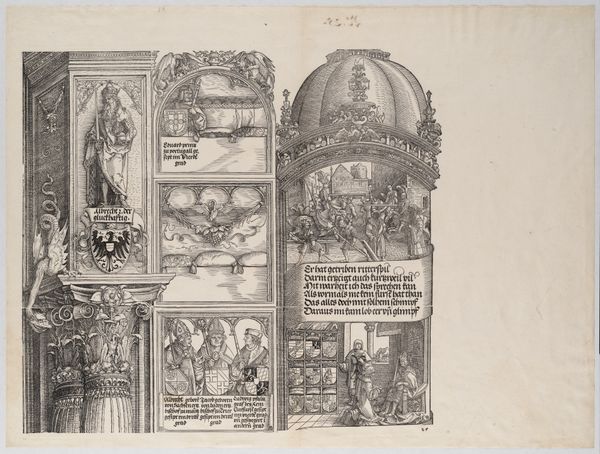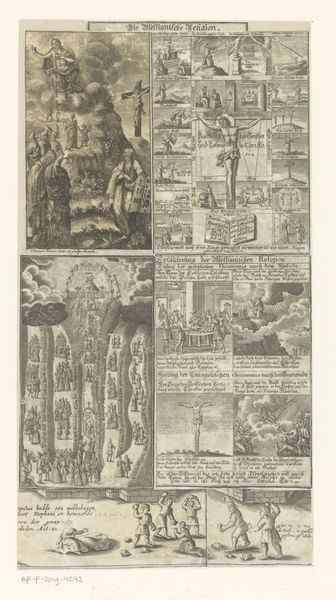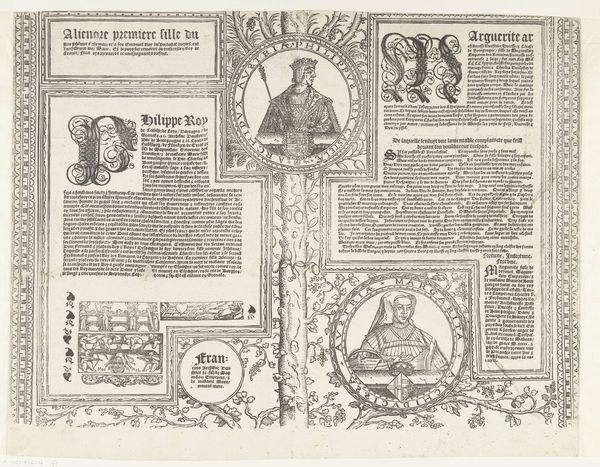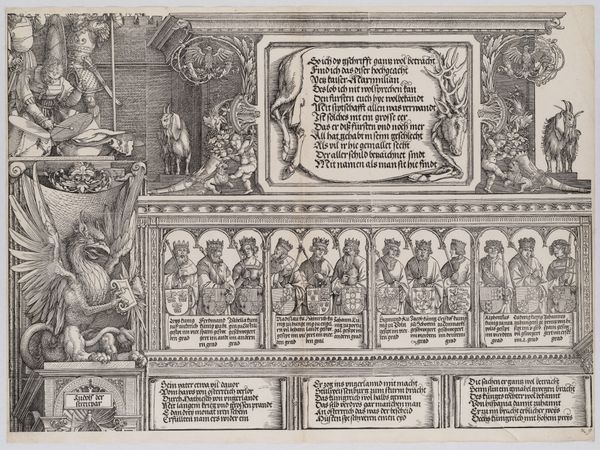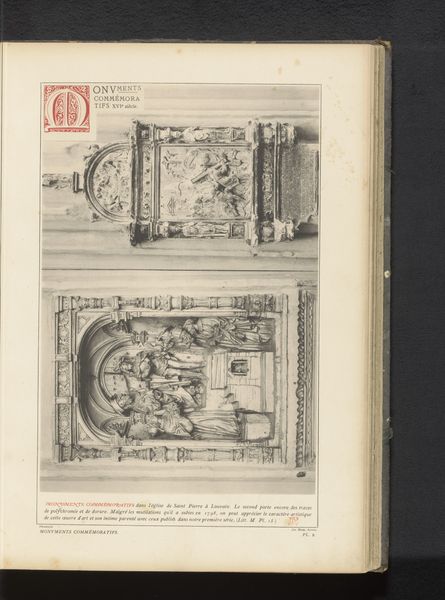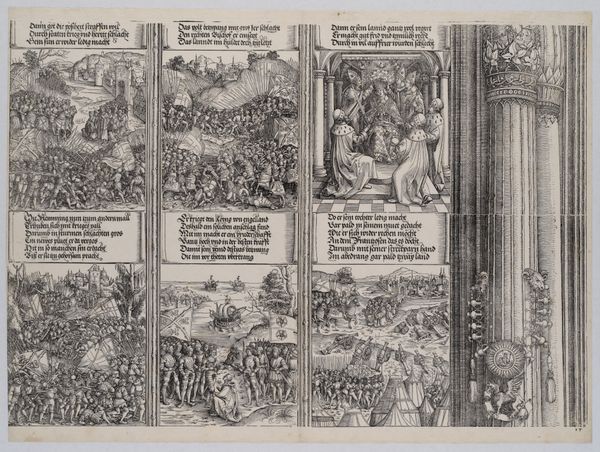
The Tomb Erected by Maximilian for His Father; and The Imperial Treasure; with Portraits of Maximilian's Ancestors and Relatives, from the Arch of Honor, proof, dated 1515, printed 1517-18 1515
0:00
0:00
drawing, print, woodcut, engraving
#
portrait
#
drawing
# print
#
sketch book
#
woodcut
#
history-painting
#
northern-renaissance
#
engraving
Dimensions: Sheet: 18 1/4 × 24 5/16 in. (46.3 × 61.8 cm)
Copyright: Public Domain
Albrecht Dürer created this print, "The Tomb Erected by Maximilian for His Father," around 1515, using woodcut and engraving. The visual impact is immediately striking: a blend of architectural grandeur and intricate detail, all rendered in stark black and white. The print's composition is divided into distinct panels. On the left, we see a fragment of an imposing architectural structure, classical columns that convey imperial power. To the right, smaller framed portraits of ancestors are stacked vertically, each accompanied by heraldic symbols and inscriptions. Beneath these portraits are scenes depicting death and the imperial treasury. Dürer employs line and texture to create a rich visual language. The use of hatching and cross-hatching gives depth to the architectural elements and models the faces in the portraits. The juxtaposition of architectural monumentality with intimate family portraits raises intriguing questions. How does Dürer use form to explore notions of lineage, power, and memory? It reminds us that art’s meaning is never fixed, but evolves through our encounters with it.
Comments
No comments
Be the first to comment and join the conversation on the ultimate creative platform.

